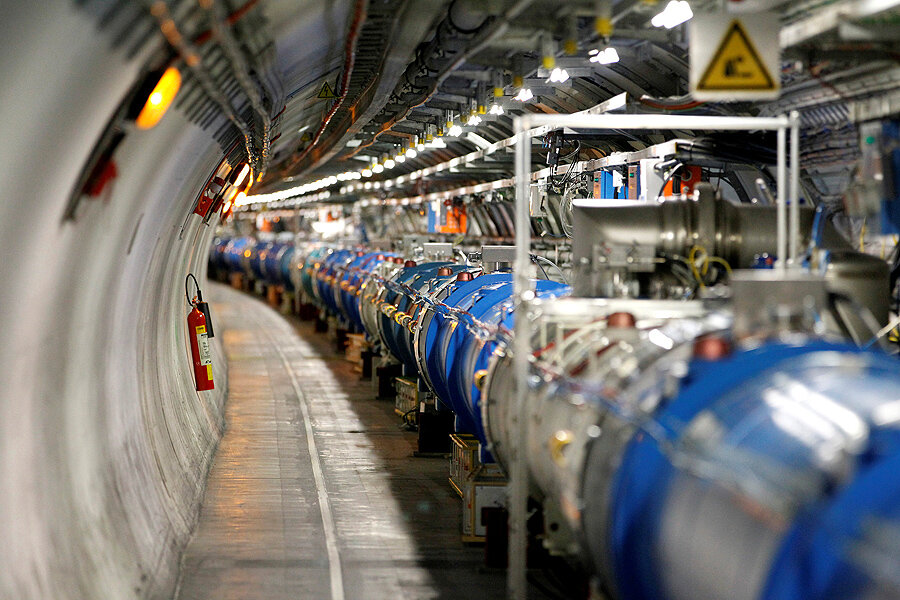Will scientists find something new in Large Hadron Collider data?
Physics researchers at CERN are preparing to sift through the latest batch of data from the Large Hadron Collider, an opportunity that some say happens only once in a lifetime.
This batch of data is unusually large. Between April last year, when the collider was switched on, and the end of the year, scientists at CERN collected about 2.6 “inverse femtobarns” (a unit of measurement for particle collision events) of data. Thus far this year, they have already collected 8 fb−1 , giving them a monster treasure trove of information to explore.
"This is the time when the probability of finding something new is highest," Tiziano Camporesi, head of the Compact Muon Solenoid (CMS) experiment at CERN, told Reuters.
The Large Hadron Collider, located beneath the Earth on the border between France and Switzerland, is known for smashing protons into each other at very high speeds and examining the particles created by the collisions. First switched on in 2008, the LHC discovered the famous Higgs boson particle in 2012, a finding that won the Nobel Prize for physics in 2013.
While the discovery of the Higgs boson was a leap forward for particle physics, many questions still remain that cannot be answered by physics’ Standard Model, the theory that classifies all of the known subatomic particles and describes their interactions. For instance, the Standard Model does not predict the existence of dark matter or dark energy, it doesn't explain how gravity works, it doesn't predict that neutrinos can change their flavor, and it doesn't explain why all the matter in the universe wasn't annihilated by an equal amount of corresponding antimatter.
There are currently seven particle detection experiments at the LHC. Two of them, Atlas and CMS, were involved in the discovery of the Higgs boson particle.
Now, scientists are excited by a “bump” detected by both Atlas and CMS in December. In the half year that has transpired since the bump was detected at an energy of 750 gigaelectronvolts, 450 papers have been written about the “bump,” leading some to urge caution against leaping to conclusions.
"What we have seen is like if you had thrown a coin six times and see that it always comes out heads,” Dr. Camporesi told Reuters. “You wouldn’t bet that the coin has two heads just on that."
"The big reason that people are excited about this bump is that both experiments (Atlas and CMS) saw a hint in roughly the same place,” Stefan Söldner-Rembold, a professor of particle physics at the University of Manchester, told the BBC. “But even this is not completely unlikely."
According to the BBC, there are a few possibilities where the identity of the “bump” is concerned. Depending on its spin, the particle could be a long lost cousin of the Higgs boson, or it could be a graviton, a thus far purely theoretical particle associated with the force of gravity.
It could also be the first supersymmetric particle, confirming a theory that every Standard Model particle has an unseen partner – the Higgs boson’s would be termed the Higgsino. Scientists, however, say that this is unlikely.
To really mark an occurrence as a discovery, it must have a just one in 3.5 million chance of being a coincidence, according to the BBC. And Camporesi isn’t too optimistic – he told Reuters that he suspects dark matter will be much more elusive than the Higgs boson.
Physicists will run through the data for the next month, hoping to learn more about the data they have gathered before the Conference on High Energy Physics in Chicago in August.






